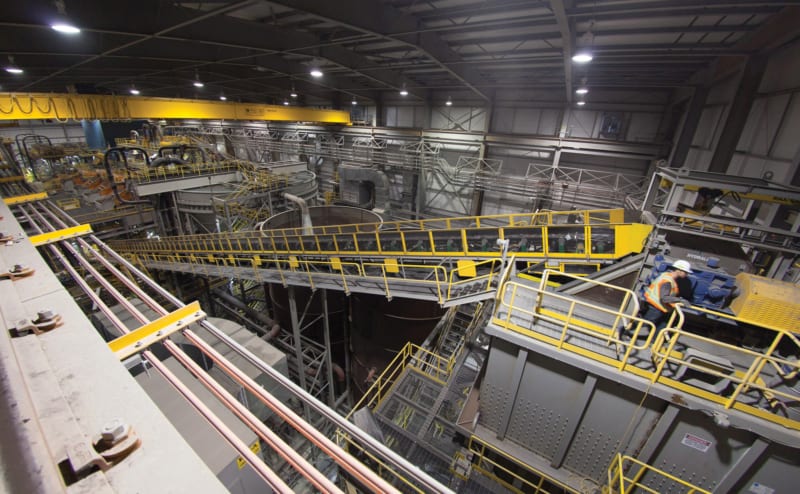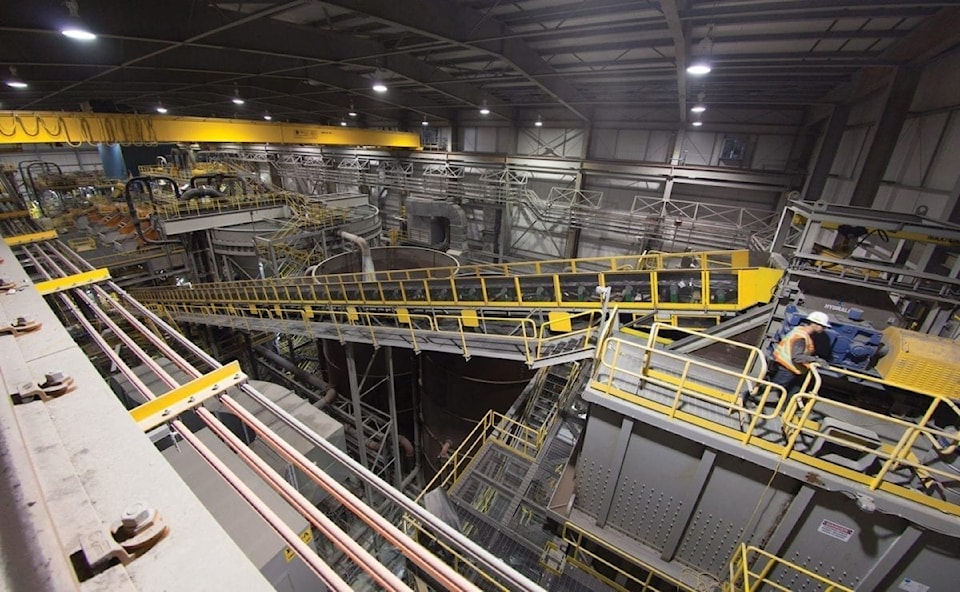Diamond mines working on ways to extend their lives and a rare earth experiment scoring a win in the approvals process made for a handful of positive Northern business stories to start 2020.
And news last week that the price of copper, typically abundant in Canadian Shield rock, has rebounded, reminds us of the cyclical nature of mining.
The diamond market is down today, but any number of factors, trends or world events could conspire to increase price and demand.
The mines appear to be doing their part.

Sept. 15, 2016
photo courtesy DeBeers Canada
De Beers Canada told the Mackenzie Valley Land and Water Board in December it intends to spend $2.88 million on a two-phase drilling program exploring 11 sites at Gahcho Kue Mine. This followed a tip at a hearing in November to "stay tuned" as the company applies to operate beyond 2030, which in turn followed the first kimberlite discovery there in 20 years by minority owner Mountain Province Diamonds in May.
And Cheetah Resources, which is running an experimental rare earths demonstration mine southeast of Yellowknife, cleared a regulatory hurdle, which in the context of trade tensions with China, far and away the world's primary supplier of the materials essential to technology, is a bright light indeed.
Now turn your attention to the Christmas gift of a Dec. 24 submission to the land and water board by Dominion Diamonds, which wants to remove as much as 1,200 tonnes of sample material per year from stakes near Glowworm Lake, about 20 kilometres southwest of the Nunavut border on a latitude comparable to Baker Lake, Nunavut, billed as the geographical heart of Canada.
You don't have to go to the centre of the country to experience the limitations of the infrastructure in place for these economic drivers, though. The Mackenzie Valley Highway, Slave Geological Province road, and the twinning of the Taltson hydroelectric generating complex all qualify as what Prime Minister Justin Trudeau described as "foundational economic infrastructure" in his mandate letter to Northern Affairs Minister Dan Vandal. In fact, supporting the territories in planning hydroelectric projects is mentioned specifically.
Each of these nation-building undertakings would reduce the overhead of current and future mines, and close the gap between the punishing costs of running mines in the North and the relatively inexpensive south, where resources can in some cases be pulled out of the ground for a sixth of the cost.
Plus, more hydro means less expensive and un-environmentally friendly diesel, which must be shipped long distances and burned to make electricity.
And maximizing the yield from resources that can be developed responsibly supports the protection of areas where Northerners don't want to see an industrial footprint, places like the recently created Ts'ude Niline Tuyeta, which contains important habitat for wildlife and culturally essential traditional hunting and training grounds.
Mining has always been of national import to Canada. Both the GNWT and the minority parliament in Ottawa should have everything they need to create the conditions that will convince miners to come, or stay.
The territory must continue to diversify its economy but there is nothing on the horizon today that could approach replacing the jobs and wealth that would be lost if the diamond mines are unsuccessful in their efforts to extend their lives.
This year is the year for a coalition of Liberals and MPs from other parties to allocate the NWT its fair share of economic stimulation funding, and for MLAs here to answer Premier Caroline Cochrane's call to give the mining industry an ally which, if the NWT and Nunavut Chamber of Mines is to be believed, has a lot to do with thinning out red tape.
But in order for mining to continue to be successful in the territory it must win hearts and mines. The territory's diamond mines have generally been good corporate citizens and many residents owe their personal prosperity to their presence. But not all mines that have set up shop in the NWT have been, and every mine that fails to make their case to Indigenous governments, that leave abandoned mines and extensive environment damage, or fails to properly benefit Northerners, harms the industry and makes it more difficult for new mines to succeed.
It is a difficult balance, one that must be carefully navigated by both industry and government.
